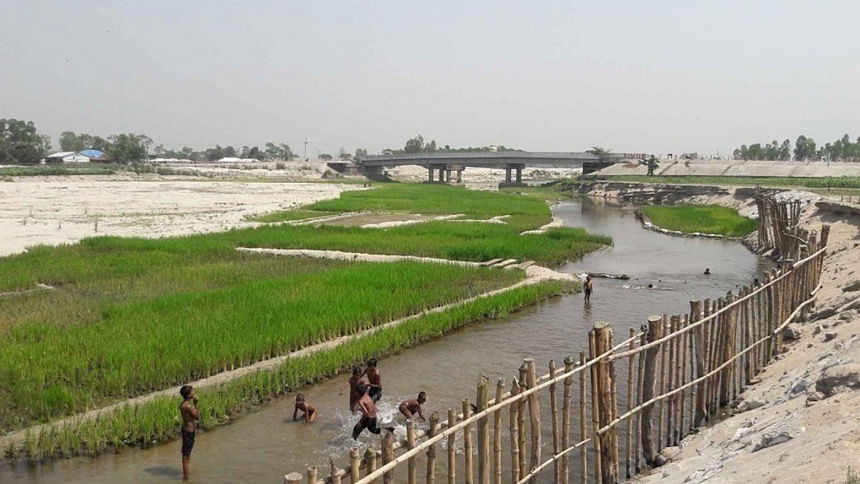Sorry state of a river excavation work

Excavating streambeds and banks to improve navigability of rivers is a routine work in Bangladesh. Crores of taka are spent every year for this purpose. Because the Bangladesh Water Development Board (BWDB)—the state agency responsible for surface and groundwater management—has been doing it for so long, one could be excused for expecting some degree of efficiency in how it conducts the work, especially in taking care of the excavated earth so that it doesn't wash back and undo the very purpose of this exercise. The reality, however, couldn't be further from this—as evidenced, most recently, by an excavation work in the Charalkantha River in Nilphamari. According to a report, the agency excavated an 80-kilometre stretch of the river last year, only for most of the excavated earth to make it back to the river later and shrink it to a mere channel at most places.
Forget about the cost of this project. Just the fact that there were no proper disposal or compaction measures for the excavated earth, a basic requirement for a project of this kind, shows the height of inefficiency of those behind it. As a result, not only is the river constricted again by washed-down earth which had been piled up on its bank, locals are now cultivating paddy on large patches of the filled-up river! In some places, locals have also complained about one side of the river facing erosion as the excavated earth had been dumped on the other side. Who will take responsibility for the riverside households and privately-owned agricultural land ruined by this ill-advised decision? Here is a project that not only squandered about Tk 114 crore in one year and damaged life and livelihoods, but also did the very opposite of its intended goal by further constricting and refilling the river.
This is, unfortunately, not a one-off incident. We often come across news of such botched-up operations by the river authorities. Apparently, what to do with the excavated earth and sand remains a perennial mystery. But such excavations are neither new nor difficult to execute with proper planning—countries around the world have been doing that for a long time. True, sometimes there can be natural causes for riverbeds silting up. But that is no excuse for mismanagement, inefficiency and poor planning leading to such artificial silting and consequent sufferings of the ordinary people. This is exactly where the authorities should put their focus on. The BWDB must be held accountable for such failed excavation projects.

 For all latest news, follow The Daily Star's Google News channel.
For all latest news, follow The Daily Star's Google News channel. 



Comments